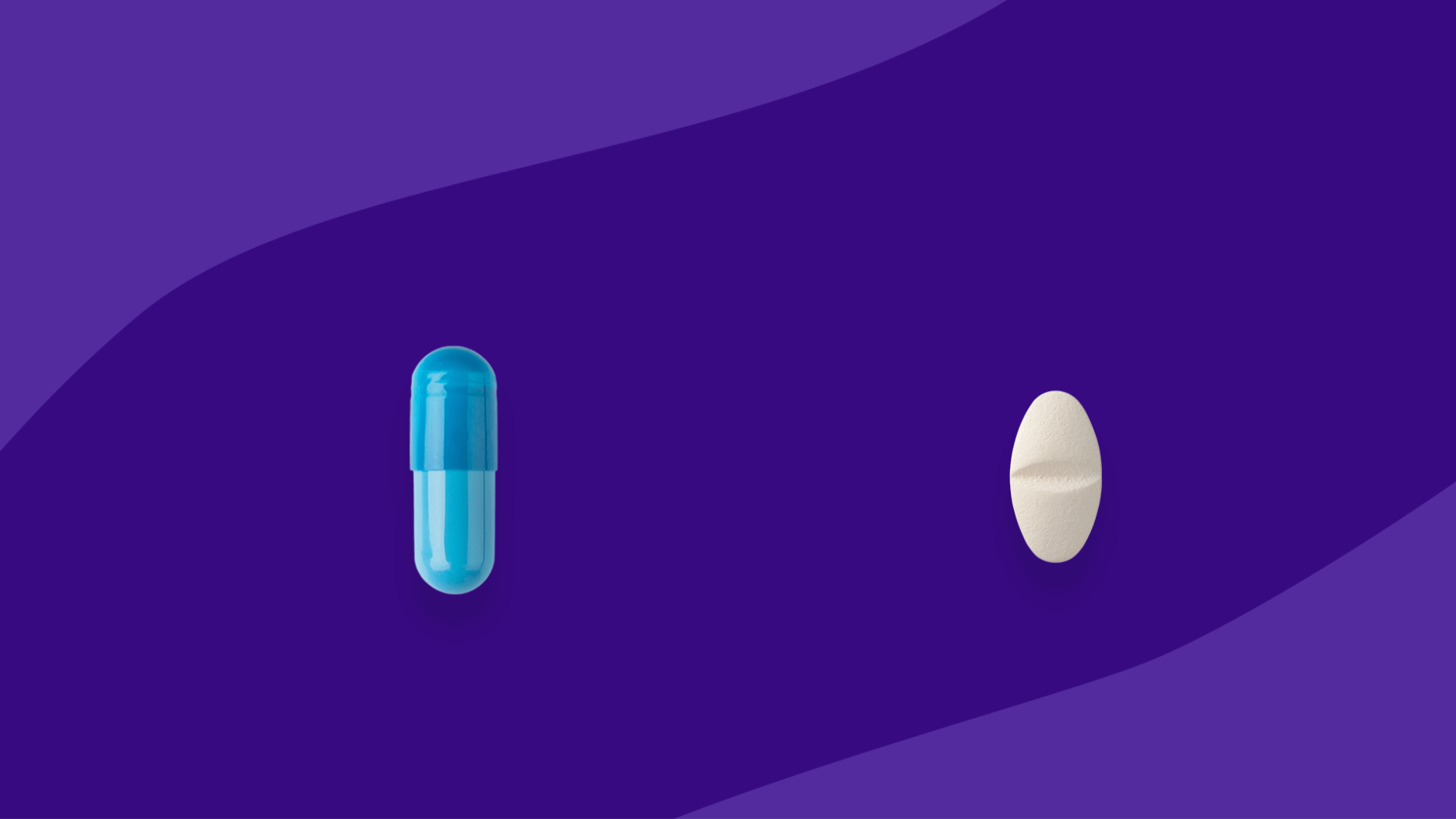Compare doxycycline hyclate alternatives | Declomycin | Minocin | Seysara | Sumycin | Tygacil | Natural alternatives | How to switch meds
Doxycycline hyclate is a commonly used antibiotic approved by the United States Food and Drug Administration (FDA) to treat a variety of bacterial infections. Some of these infections include gastro-intestinal diseases, urinary tract infections, respiratory infections, sexually transmitted infections, and bacterial skin infections such as acne. Doxycycline is a second-generation tetracycline antibiotic that inhibits the growth of bacteria that is growing. It has also been linked to having the ability to reduce inflammation in the body related to the bacterial infection.
Doxycycline hyclate is capable of treating a variety of infections, however, there are several common side effects associated with its use. Common reactions include nausea, vomiting, diarrhea, vaginal itching and discharge, headache, abdominal pain, candidiasis, vulvovaginal photosensitivity, skin/tissue hyperpigmentation, elevated liver enzymes, and permanent/temporary tooth discoloration. Some more serious reactions include hypersensitivity reactions, severe skin reactions, severe pericarditis, autoimmune disorders, anemia, thrombocytopenia, neutropenia, liver toxicity, pancreatitis, esophagitis, esophageal ulcer, pseudotumor cerebri, bulging fontanelles (infants), Clostridium difficile-associated diarrhea, and photosensitivity.
Doxycycline, along with all tetracycline antibiotics within this drug class, are classified as category D by the Food and Drug Administration (FDA). They should not be used by pregnant women or while breastfeeding as it poses the risk of decreased bone growth and permanent tooth discoloration. Expired antibiotics in this class are also linked to causing kidney damage so discard any unused medication after the expiration date. Avoiding sunlight and tanning beds while taking this antibiotic is important as it can cause the skin to sunburn easier. Drug interactions with prescription drugs such as antibiotics (i.e. amoxicillin, azithromycin) and blood thinners (i.e. warfarin) may pose complications and are usually not used with doxycycline or antibiotics in its class.
RELATED: Antibiotics 101: What are they and why do we need them?
What can I take in place of doxycycline hyclate?
Due to several mild and severe unwanted reactions associated with the use of doxycycline hyclate, this antibiotic may not be a good fit and an alternative may be required. There are a vast variety of other antibacterial medications that can be supplemented for doxycycline hyclate. Brand names for Doxycycline hyclate include Acticlate, Adoxa CK, Adoxa Pak, Adoxa TT, Alodox, Avidoxy, Doryx, Mondoxyne NL, Monodox, Morgidox, Okebo, Oracea, Oraxyl, Periostat Targadox, Vibramycin calcium, Vibramycin Hyclate, Vibramycin monohydrate, and Vibra-Tabs. This antimicrobial also comes in capsules, tablets, delayed-release tablets, and injection formulations.
Obtaining medical advice from your medical provider for the appropriate substitute antibiotic is always the best option to ensure the correct antibacterial coverage for your medical diagnosis and the bacteria that needs to be targeted.
Compare doxycycline hyclate alternatives |
|||
|---|---|---|---|
| Drug name | Uses | Dosage | Savings options |
| Acticlate
(doxycycline hyclate) |
Mild, moderate, and severe bacterial infections; severe acne vulgaris; rosacea inflammatory lesions; community-acquired pneumonia; periodontitis; sinusitis; chlamydia; syphilis; urethritis; epididymitis; proctitis; anthrax; malaria prophylaxis; tularemia; Rocky Mountain spotted fever; cholera; brucellosis | For most conditions 100 mg capsule by mouth or intravenously twice a day | Doxycycline hyclate coupons |
| Declomycin
(demeclocycline) |
Bacterial infections | 300 mg tablet by mouth twice a day | Demeclocycline coupons |
| Xerava
(eravacycline) |
Complicated intra-abdominal infections | 1 mg/kg/dose IV twice a day for 4-14 days | Xerava coupons |
| Minocin
(minocycline) |
Bacterial infections; acne vulgaris; Mycobacterium marinum infection | For most conditions 100 mg capsule or tablet by mouth twice a day | Minocycline coupons |
| Nuzyra
(emadacycline) |
Community-acquired pneumonia; acute bacterial skin infections | Oral:
Start: 300 mg tablet orally twice a day for 2 doses then 300 mg orally daily for 7-14 days total Intravenous: Start: 200 mg IV x1 dose or 100 mg IV twice a day for 2 doses then 100 mg IV daily for 7-14 days |
Nuzyra coupons |
| Seysara
(sarecycline) |
Moderate to severe acne vulgaris | Weight 33-54 kg:
60 mg tablet orally daily for 12 weeks Weight 55-84 kg: 100 mg tablet orally daily for 12 weeks Weight 85-136 kg: 150 mg tablet orally daily for 12 weeks |
Seysara coupons |
| Sumycin
(tetracycline) |
Bacterial infections (ulcerative gingivitis, listeriosis, gonorrhea, chlamydia, bacterial urinary tract infections, choler, campylobacter-food poisoning, intestinal amebiasis, pneumonia, psittacosis, upper and lower respiratory tract infections, skin and skin structure infections, Rocky Mountain spotted fever, lyme disease ); acne vulgaris; rosacea; syphilis | For most conditions 125-250 mg capsule by mouth four times a day
*Syphilis: 500 mg capsule by mouth four times a day |
Tetracycline coupons |
| Tygacil
(tigecycline) |
Complicated intra-abdominal infections; complicated acute bacterial skin infections | Start 100 mg IV for one dose then 50 mg IV twice a day for 5-14 days | Tygacil coupons |
Top 5 doxycycline hyclate alternatives
The following are some of the most common alternatives to doxycycline hyclate.
1. Declomycin (demeclocycline)
Declomycin is a first-generation tetracycline antibiotic used for the management of a variety of bacterial infections. These infections may impact the lungs, urinary tract, skin, or intestines. Declomycin also has some off-label uses such as the management for the syndrome of inappropriate antidiuretic hormone secretion. Some common reactions associated with demeclocycline include nausea, vomiting, diarrhea, anorexia, flatulence, abdominal discomfort, epigastric discomfort, photosensitivity, rash, candidiasis, headache, dizziness, tinnitus, tooth discoloration, and enamel hypoplasia. More serious reactions include anaphylaxis, angioedema, photosensitivity, lupus erythematosus, serum sickness-like reaction, erythema multiforme, exfoliative dermatitis, Stevens-Johnson syndrome, diabetes insipidus, pancreatitis, thrombocytopenia, neutropenia, hemolytic anemia, pseudotumor cerebri, kidney and liver toxicity, superinfection, Clostridium difficile-associated diarrhea, and Jarisch-Herxheimer reaction. It is usually prescribed at 300 mg by mouth twice a day and can be used for adult and pediatric cases (preferably those who are 8 years or older).
2. Minocin (minocycline)
Minocin is very similar to doxycycline as it is a second-generation tetracycline antibiotic as well. It treats a variety of skin, acne, respiratory, gut, and urinary tract infections. It is also used for the management of chlamydia or a second-line antibiotic for syphilis and gonorrhea when penicillins are not an option. Minocin can also be used for leprosy as a nontraditional treatment alternative. Common reactions associated with Minocin management are similar to doxycycline but also include anorexia, flatulence, lightheadedness, dizziness, vertigo, gait changes, drowsiness, fatigue, tinnitus, rash, pruritus, enamel hypoplasia, injection site reaction with IV use. Adverse effects that may be considered more serious are lupus erythematosus, vasculitis, serum sickness, erythema multiforme, exfoliative dermatitis, toxic epidermal necrolysis, Stevens-Johnson syndrome, thyroid cancer, and superinfection. Pediatric options are available as long as the child is at least 8 years old. Adult dosages are 100 mg orally twice a day.
Related: Minocycline vs. doxycycline
3. Seysara (sarecycline)
Seysara is another tetracycline class antibiotic. It was approved in 2018 by the FDA as a third-generation tetracycline. Its purpose is for the management of both adult and pediatric acne. Pediatric patients must be at least 9 years old to use Seysara. Side effects seen with Seysara and not with doxycycline include lightheadedness, dizziness, vertigo, enamel hypoplasia, and superinfection. The drug is dosed based on weight. If the weight is reported to be 33-54 kg, then a 60 mg tablet taken orally daily can be prescribed. When the weight of the patient is 55-84 kg, then a 100 mg tablet can be given orally daily. A patient weighing 85-136 kg is prescribed a 150 mg tablet orally daily. All weight categories are given the medication for a 12-week duration, and the same calculations are used for adults and children. Medications such as penicillins, blood thinners, and other acne medications should be avoided while using.
4. Sumycin (tetracycline)
Sumycin is a naturally occurring tetracycline broad-spectrum antibiotic used to treat several different types of bacterial infections. These involve the skin, severe acne, rosacea, lungs, kidneys, lymph nodes, intestines, and genitals can all be managed with Sumycin. When more serious infections cannot be managed with first-line treatment, Sumycin is a great alternative. Some of the more serious infections include anthrax, syphilis, chlamydia, and gonorrhea. There is an off-label use of Sumycin for malaria and Helicobacter pylori infections. Side effects that can occur with tetracycline not seen with doxycycline involves rash, urticaria, enamel hypoplasia, angioedema, serum sickness-like, erythema multiforme, exfoliative dermatitis, superinfection, and Jarisch-Herxheimer reaction. Dosing used for this antibiotic is 125-250 mg by mouth four times a day via a capsule formulation.
5. Tygacil (tigecycline)
Tygacil is a third-generation tetracycline antibiotic. This antibiotic is not considered a first-line treatment option and should only be used when other antibiotics have failed or are not appropriate. Tygacil is indicated for the management of bacterial infections usually involving the skin and digestive system. It is also a popular second-line treatment for pneumonia. Common reactions seen with Tygacil are nausea, vomiting, diarrhea, infection, abdominal pain, headache, anemia, hypoproteinemia, Asthenia, fatty liver, dizziness, abnormal healing, hyperamylasemia, rash, abscess, dyspepsia, hyponatremia, photosensitivity, and enamel hypoplasia. It is only available as an injectable, and dosing for Tygacil is recommended to start with a 100 mg IV for one dose then 50 mg IV twice a day for 5-14 days. Pediatric dosing is also available for those at least 8 years old.
Natural alternatives to doxycycline hyclate
Bacterial infections are serious conditions that should always be monitored closely. Due to the rise in antibiotic resistance, natural supplements, and herbs that have antimicrobial properties are becoming more popular in use- especially for milder infectious conditions. Some examples of these types of natural alternatives include oregano, garlic, uva-ursi, berberine, colloidal silver, and manuka honey. Vitamins (i.e. magnesium), laxatives, and antacids should be avoided 2 hours prior to or after taking a tetracycline class antibiotic as they can make the antibiotic less effective.
Natural supplements used as antibiotics have limitations. It is important to get the proper diagnosis and recommendations from your healthcare provider first before initiating these alternatives.
RELATED: Why you should take probiotics with antibiotics
How to switch to a doxycycline hyclate alternative
It is important that you do not stop taking your prescribed doxycycline until you have discussed the side effects you are experiencing with your healthcare provider
first. Sometimes the medication may be continued if the side effects are minor. Additionally, if the antibiotics are discontinued before completing the full dose, the
bacterial infection can return and sometimes become more stubborn to treat forming a resistance to the antibiotic. Once an alternative is provided by your
physician, you may discontinue doxycycline at that time. Regardless if you are taking doxycycline or an alternative, you can always find savings when using a SingleCare discount card.











